I first learned of the “peak-end rule” when I read Daniel Kahneman’s book, Thinking, Fast and Slow. I thought it was interesting and could relate. Years later, when Clara died, the reality of it hit me.
This post reflects my state of mind immediately after I lost Clara. My perspective has widened over time and the pain has softened. I am not sinking into fixations or deep regrets. I gave her a good life. The concepts I discuss in this post are part of what helped me through my initial grief. I hope they will help others, as well.
Bucket lists. A favorite last meal. A peaceful, painless death, surrounded by loved ones.
It is natural to want the best for our beloved pets at the ends of their lives, as we have throughout them.
Yet, after losing Clara, I noticed something in myself. I had a focus, almost an obsession with her last hours, her last day, her last week. Even her last couple of years. And I have seen this focus in many others.
It has a name: the peak-end rule.
Definitions: The Peak-End Rule and Duration Neglect
The peak-end rule is a cognitive bias that causes us, when looking back on an experience, to focus on two things: the most intense part of it and the end.
I’m not saying that these things aren’t important. But the peak-end rule can—and has been shown experimentally to—cause us to de-emphasize, even ignore long periods of pleasure and happiness. The same with long periods of moderate pain, when flanked by more extreme pain.
Here’s a scientific definition:
The peak-end rule . . . asserts that, when people retrospectively evaluate an experience (e.g., the previous workday), they rely more heavily on the episode with peak intensity and on the final (end) episode than on other episodes in the experience — Alaybek et al., 2022.
A related effect is called duration neglect.
. . . we define [duration neglect] as little or no independent effect of duration on retrospective evaluations of affective episodes. — Fredrickson & Kahneman, 1993.
This is the flip side of the peak-end rule. We devalue duration in comparison with the peak and end of an experience, even if the peak and end are very brief compared to the total experience.
Research has shown evidence for duration neglect when we recall both pleasant experiences (e.g. vacations) and unpleasant ones (medical procedures).
Here’s an article with a good discussion of both the peak-end rule and duration neglect.
The peak-end rule has been shown to apply to retrospectively assessing the happiness of a life (Kahneman, 2012, p. 387). So here I am, after Clara’s death, noticing the peak-end rule while thinking over her life.
So Many Regrets (And Some Blessings)
I have all these regrets relating to “the end.” They were very intense in the days after Clara died. In retrospect, this happened to varying degrees with my other dogs as well.
Clara’s Potato Chip
I wish I had given Clara a few more potato chips on her last night on earth. I gave her one, but she wanted more. What I would have given her had I known! And I kept thinking of it on the day she died. Why just ONE damn potato chip? Luckily, Ruth was more generous, and gave her three or four cheese crackers. I asked Ruth that day, after Clara was gone, how many she gave her the night before. I wept in gratitude about those crackers.
But Clara had great food her whole life. Good nutrition to the best of my ability, but also wonderful treats, wonderful variety, very high-value foods. Homemade dog treats. People food. A grilled lean pork chop for her lessons. Fast food chicken sandwiches for training on the road and whipped cream pup cups. And since we moved here in 2018, after we eat, Ruth gives the dogs tastes of our suppers or other fun food that’s safe for them. She does this every day.
Clara has had food that other dogs might only dream of, over the duration of her whole life. And I’m fixated on that one potato chip.
Zani’s Ice Cream
Out of all my dogs, I had the most warning that Zani was reaching the end of her life. She had a probable diagnosis of lymphoma, but she was still feeling good for a few weeks. We had time for a mini-bucket list. But you know what I focused on after she passed? My timing at her euthanasia. I was too late when I offered her some ice cream.
It was a blessing that I could be there at all; it was the height of COVID, September 2020. It was also a blessing that she wasn’t scared at the vet. She walked in with the tech in her jaunty way, eager to find people to visit.
But when the moment came, we were in a rush. I wasn’t fast enough with the vanilla ice cream I had brought in a thermos. Zani looked at it, then the sedation kicked in and she fell asleep. I still think about that ice cream. Is it about me and my fantasy of her perfect passing? Mostly. I still hope that she got enough of a whiff of the ice cream to have a happy feeling on the way out.
But I have some sweet memories from Zani’s last days. There was the fun mini-trip I took with her four days before she died, many yummy meals, and the special chews that Debbie Jacobs sent us in the nick of time. Zani got to chew one on her last day, about an hour before her appointment. I am so grateful for that.
Clara’s Training
This one is not about the last moments, but the last years. I have a huge regret that I did not continue my training fun with Clara after Lewis came. He exhausted me. I wasn’t even able to do much of my own work for a long time. Luckily, Clara still had her walks. I had been walking her and my partner’s dog daily since April 2021 (then Lewis, starting in 2022). I am so grateful for that, and proud that I walked them so consistently. But Lewis dominated my time. Clara’s training games (and the trick title work) ceased abruptly. I feel guilty.
This is a reasonable regret, more than a bias. We stopped doing something she loved. But feeling extra bad about it is an example of both the peak-end rule and duration neglect. Clara has gotten more of my time and attention than any other dog. We lived for each other. That never stopped. She has been on outings and gone places the others never have. For seven years, she had two fun lessons a week with a great trainer. We usually went to a shopping mall (ice cream!) or a beautiful park for a long walk.
She got my best training self for ten years. And high value treats and much, much play. But because I stopped training with her for two years (with a few exceptions), and because it was during our last years together, I feel this guilt. If there had been a hiatus of a similar period, but in the middle of our lives together, I would have regrets, but the loss likely would not loom so large.
I stopped walking the dogs for two weeks last summer after I sprained my ankle. I hated it for them. But since it wasn’t at the end for Clara, it doesn’t horrify me to think about. She got three more months of walks after that. And it’s a blessing to me that her last one was extra sweet because it was drizzling rain. That was her favorite kind of walk.
A happy walk after a rain in May 2024
Clara’s Last Hours
Hemangiosarcoma just snuck up, so I don’t know that I could have done anything better. But I feel awful, of course, that her last hours on this earth were painful, and she was in a foreign place. No idyllic euthanasia at home after a perfect bucket week or month. But it helps immensely that I was with her at the very end, that I was the last thing she saw before she sank into peace. And it WAS peaceful. So much better than Cricket, who fought, and Summer, for whom I wasn’t present.
Perhaps Clara was in as much pain, if I can compare, after her spay when she was a teenager. They let her come home the same day, because of her extreme fear. She was hurting. But I haven’t thought of that in years. It was not at the “end.”
Do I seem callous for comparing these things? I am not undervaluing any of her pain. Just noting that her last morning “feels” like the worst to me. But I don’t know how it felt to her. And she is gone now, leaving me to think about her life.
The GoPro
Another regret, and this one didn’t even affect her, only me. But it feels somehow like it affected her. I bought a GoPro, largely to get some candid shots of Clara and record the dogs on their walks. Clara reacted poorly to having a phone camera pointed at her for her whole life; I was hoping she would not do so with the GoPro. I got it about four days before she died. I didn’t know what was coming. I didn’t set it up in time.
I almost deleted this example, since it feels in really bad taste to have the privilege to buy such a camera and then whine about not getting to use it. But I include it because it’s another example of bias. Because of my ankle sprain in June, I stopped using my phone to make videos of Clara’s walks. I needed to watch my footing better. I have many videos of Clara on walks. And while there are probably other three-month gaps in that set of videos, it specifically hurts that I don’t have any for her last three months.
The Experiencing Self vs. the Remembering Self
Kahneman talks about the “experiencing self” and the “remembering self” and their vastly different perceptions of situations and events. The remembering self is the one that values peaks and ends. The experiencing self. . . experiences. It’s the one living in the moment.
I’m thinking about my living dogs now. Lewis and my partner’s Chihuahua mix, Choo Choo. Many people who have just lost a dog will say to others, “Hug your babies today, give them treats.” Some will say to act as if every day is your pet’s last day because you never know if it might be.
I ran that last one through my mind in the present and my experiencing self said NO WAY. Give Lewis a whole bunch of potato chips? EVERY NIGHT, because it might be his last night? No. The “treat them as if every day were their last” idea doesn’t cut it in many ways. Health. Nutrition. The dangers of too much fat and salt and the harm that can come from unbridled treat food. The risks of exhaustion or injury if you focus on play or intense activities. What an interesting idea, to try to make every day a peak. Because that’s what the idea boils down to. But it was an instant No when I thought about it. Out of the question.
I spell this out because it was interesting to have my experiencing and remembering selves come smack up against each other. I was regretting Clara’s one potato chip at the same time I was refusing to do something that might prevent that regret with Lewis.
Application of the Peak-End Rule to How We Perceive Our Dogs’ Lives
I’m surprised that there is not a lot of written discussion about this. Grief over losing a pet is becoming more recognized and affirmed by society, and resources for this type of loss are burgeoning. The peak-end rule can aid understanding of why some things can hurt so badly.
There is one significant exception to the silence on this topic related to pets’ lives. Veterinarian Mary Gardner, in Treatment and Care of the Geriatric Veterinary Patient, focuses on the peak-end rule in the context of euthanasia. After discussion of the rule, in a section titled “Endings Matter,” she advises vets on the ways they can help not only the pet but the pet’s guardians by making the euthanasia experience as calm and peaceful as possible. The book has thoughtful instructions on how to speak to the guardian about the process, the order of events, and more. She ends the section with these words:
Although our pets are a part of our stories (an important chapter), their own lives are a story. And in stories, endings matter most. So make the most out of the end and make it good — Gardner and McVety, 2017, p. 338.
Why Knowing about the Peak-End Rule and Duration Neglect Bias Can Be Helpful
I’ve related a lot of sad moments and regrets in this post. But the point behind them, and my impetus for sharing, is that knowing about the peak-end rule helped me put those things in perspective.
I understand more than ever why bucket lists can be such a good thing. Not only for the dog, but for the person. Having memories of the extra-special times near the end of our dogs’ lives can be sweet. The ones I described for Zani above were not dramatic. Many people do much more unusual things. But ours were enough out of the ordinary that the memories shine for me.

I now have a weapon against my regrets and sad memories. I’ve delineated some of my regrets above. (That is not a complete list.) I have kept the painful images and memories of Clara’s last hours private. But I’ve learned that we can honor duration, even if that doesn’t come naturally. We can remind ourselves of the thousand fun walks or trips our dogs had even if they missed one their last day.
Rather than focusing on the dramatic “peaks,” which stand out in our memory, and rather than trying to make peaks every day, we can be present and constant with our dogs and mindful of their happiness. Our experiencing selves can do that, and we can remind our remembering selves of it.
I would never ever dismiss or devalue the events near the ends of our loved ones’ lives, good or bad. But it has helped me immensely to consider the rest of Clara’s life. It was long, it was calm, it was safe, it was happy. I made it that way, and I can feel peace in that.
Copyright 2024 Eileen Anderson
Related Posts
References and Resources
Alaybek, B., Dalal, R. S., Fyffe, S., Aitken, J. A., Zhou, Y., Qu, X., Roman, A., & Baines, J. I. (2022). All’s well that ends (and peaks) well? A meta-analysis of the peak-end rule and duration neglect. Organizational Behavior and Human Decision Processes, 170, 104149.
Diener, E., Wirtz, D., & Oishi, S. (2001). End effects of rated life quality: The James Dean effect. Psychological science, 12(2), 124-128.
Fredrickson, B. L., & Kahneman, D. (1993). Duration neglect in retrospective evaluations of affective episodes. Journal of personality and social psychology, 65(1), 45.
Gardner, M., & McVety, D. (Eds.). (2017). Treatment and care of the geriatric veterinary patient. John Wiley & Sons.
Kahneman, D. (2011). Thinking, fast and slow. Farrar, Straus and Giroux.
Müller, U. W., Witteman, C. L., Spijker, J., & Alpers, G. W. (2019). All’s bad that ends bad: there is a peak-end memory bias in anxiety. Frontiers in psychology, 10, 1272.
Zenko, Z., Ekkekakis, P., & Ariely, D. (2016). Can you have your vigorous exercise and enjoy it too? Ramping intensity down increases postexercise, remembered, and forecasted pleasure. Journal of Sport and Exercise Psychology, 38(2), 149-159.













 I remember the night before Kit’s last vet visit, I sat up with him all night intermittently having panic attacks. Yeah, that was fun (/sarcasm). It was me having the panic attacks, in case that wasn’t clear. Thankfully Kit was resting comfortably! I’ve always dealt with anxiety related issues, but it’d been awhile since I had panic attacks that bad. I think that night, when it was just me and Kit on our last night together, the reality of everything really hit me.
I remember the night before Kit’s last vet visit, I sat up with him all night intermittently having panic attacks. Yeah, that was fun (/sarcasm). It was me having the panic attacks, in case that wasn’t clear. Thankfully Kit was resting comfortably! I’ve always dealt with anxiety related issues, but it’d been awhile since I had panic attacks that bad. I think that night, when it was just me and Kit on our last night together, the reality of everything really hit me.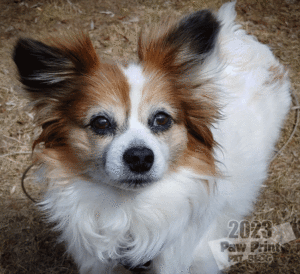 Unfortunately there’s no magic pill or exercise that will eliminate grief. In most cases, it just takes time. We never forget our lost loved ones, but in time we do adjust to a new normal. The shock of losing a beloved family member eventually, in time, becomes less raw, and we’re hopefully eventually better able to focus on happy memories instead of the shock and sadness of losing them.
Unfortunately there’s no magic pill or exercise that will eliminate grief. In most cases, it just takes time. We never forget our lost loved ones, but in time we do adjust to a new normal. The shock of losing a beloved family member eventually, in time, becomes less raw, and we’re hopefully eventually better able to focus on happy memories instead of the shock and sadness of losing them.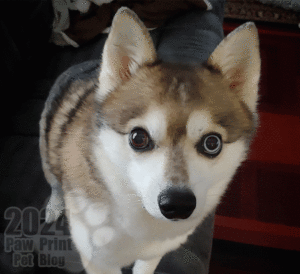 For now, I think I’m going to take at least somewhat of a break from writing about it. I wanted to share that so no one thinks it’s super weird if I go from posting grief related content to suddenly switching gears. It’s not, by any means, because I’m done mourning Kitsune. I’m just not going to have any motivation to continue this blog if every time I try to work on it I get upset.
For now, I think I’m going to take at least somewhat of a break from writing about it. I wanted to share that so no one thinks it’s super weird if I go from posting grief related content to suddenly switching gears. It’s not, by any means, because I’m done mourning Kitsune. I’m just not going to have any motivation to continue this blog if every time I try to work on it I get upset.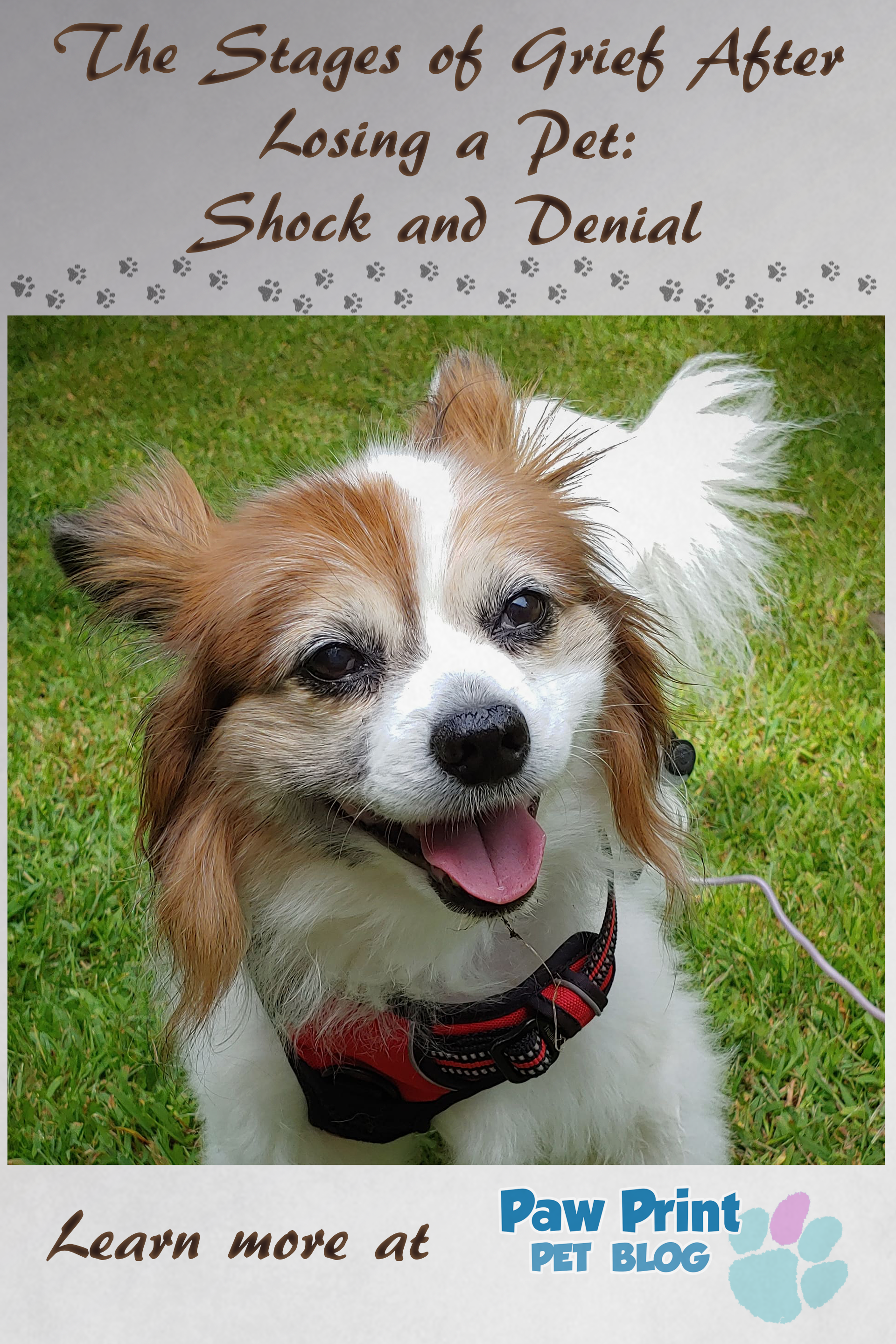
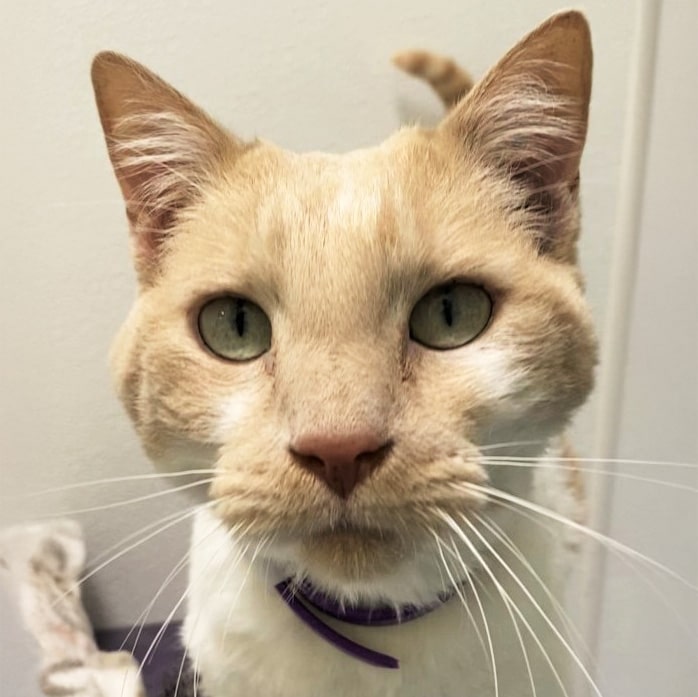


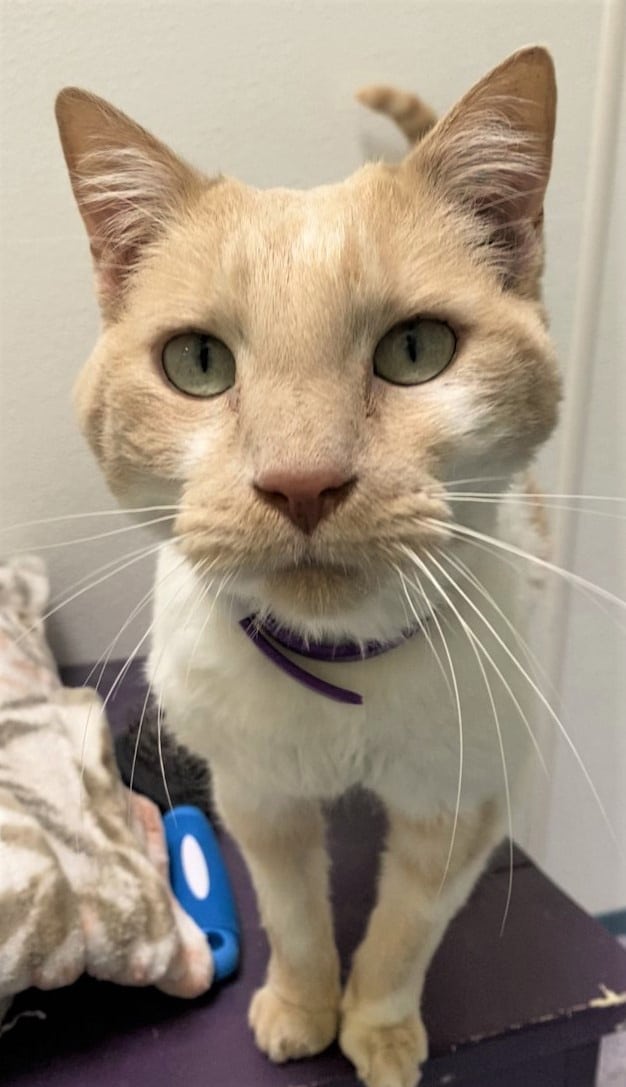 Her health challenges are complex, suffering from serious GI, dental, and breathing issues that have required continual surgical intervention, prescription food and daily medications to alleviate her discomfort.
Her health challenges are complex, suffering from serious GI, dental, and breathing issues that have required continual surgical intervention, prescription food and daily medications to alleviate her discomfort.




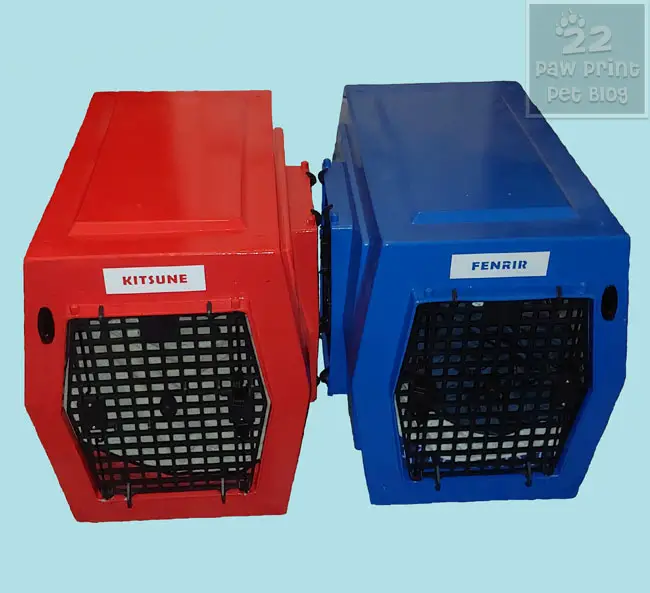 Can you tell I’m still a bit salty about it? All that work painting my crates, and if I had just waited I could have bought them in the exact colors I wanted! Oh well. My spray painted crates didn’t turn out perfectly, but I like them and I had fun working on them. In case anyone wants to look back at how I painted them, the supplies I used and such, I’ll post the link to the article I originally wrote about them.
Can you tell I’m still a bit salty about it? All that work painting my crates, and if I had just waited I could have bought them in the exact colors I wanted! Oh well. My spray painted crates didn’t turn out perfectly, but I like them and I had fun working on them. In case anyone wants to look back at how I painted them, the supplies I used and such, I’ll post the link to the article I originally wrote about them.

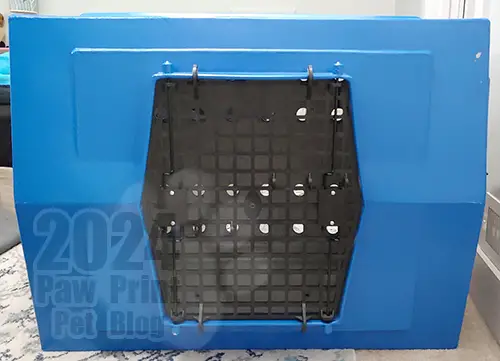



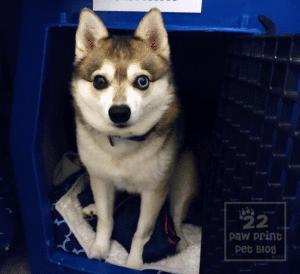 I do still wish I had known that Ruff Land Kennels was going to do a limited release of red and blue crates, because I would have bought those instead of spray painting white crates. Oh well.
I do still wish I had known that Ruff Land Kennels was going to do a limited release of red and blue crates, because I would have bought those instead of spray painting white crates. Oh well.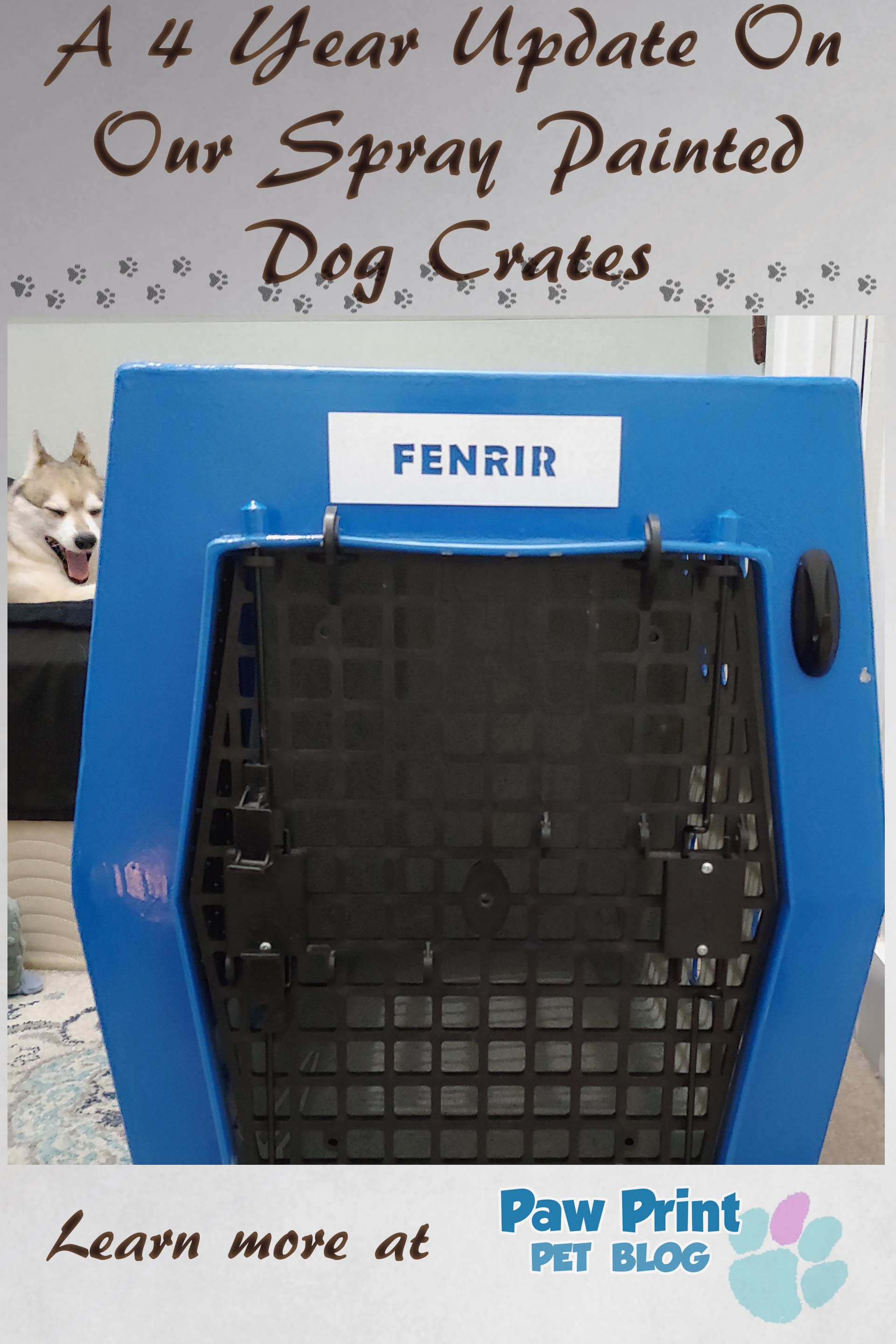 We’ve, unfortunately, been dealing with content scrapers stealing our articles. You shouldn’t be seeing this article on any site other than
We’ve, unfortunately, been dealing with content scrapers stealing our articles. You shouldn’t be seeing this article on any site other than 
 I was going to lie in this section. I was going to tell you all that Fen is doing well and then move on.
I was going to lie in this section. I was going to tell you all that Fen is doing well and then move on. I try to hide my own stress from Fen. He’s so in tune with me and I know how much it bothers him when I’m upset. I really, really miss Kit. I knew when I got dogs that losing them someday would be hard, but I don’t think I ever imagined that it would be this hard. I’ve lost pets in the past, this isn’t my first rodeo, but losing a dog really hits differently. At least for me. Since I’ve worked from home for so long, Kit was my pretty much constant companion for 15 years. It doesn’t feel right not having him here with me. Maybe it never will. Yet life goes on anyways.
I try to hide my own stress from Fen. He’s so in tune with me and I know how much it bothers him when I’m upset. I really, really miss Kit. I knew when I got dogs that losing them someday would be hard, but I don’t think I ever imagined that it would be this hard. I’ve lost pets in the past, this isn’t my first rodeo, but losing a dog really hits differently. At least for me. Since I’ve worked from home for so long, Kit was my pretty much constant companion for 15 years. It doesn’t feel right not having him here with me. Maybe it never will. Yet life goes on anyways. This post feels so awkward. I guess I mostly just felt a bit guilty about Fen’s birthday passing and not sharing about it here. But this is a far cry from my typical, optimistic, birthday post. Ah well. Fen did enjoy his special day which is all that really matters! I think I’m mostly trying to force myself to forget that he’s 9 and technically a senior now. But thankfully, the stuff I mentioned above aside, he is generally doing really well. He’s still got lots of energy. He loves hiking and playing with his toys.
This post feels so awkward. I guess I mostly just felt a bit guilty about Fen’s birthday passing and not sharing about it here. But this is a far cry from my typical, optimistic, birthday post. Ah well. Fen did enjoy his special day which is all that really matters! I think I’m mostly trying to force myself to forget that he’s 9 and technically a senior now. But thankfully, the stuff I mentioned above aside, he is generally doing really well. He’s still got lots of energy. He loves hiking and playing with his toys.





